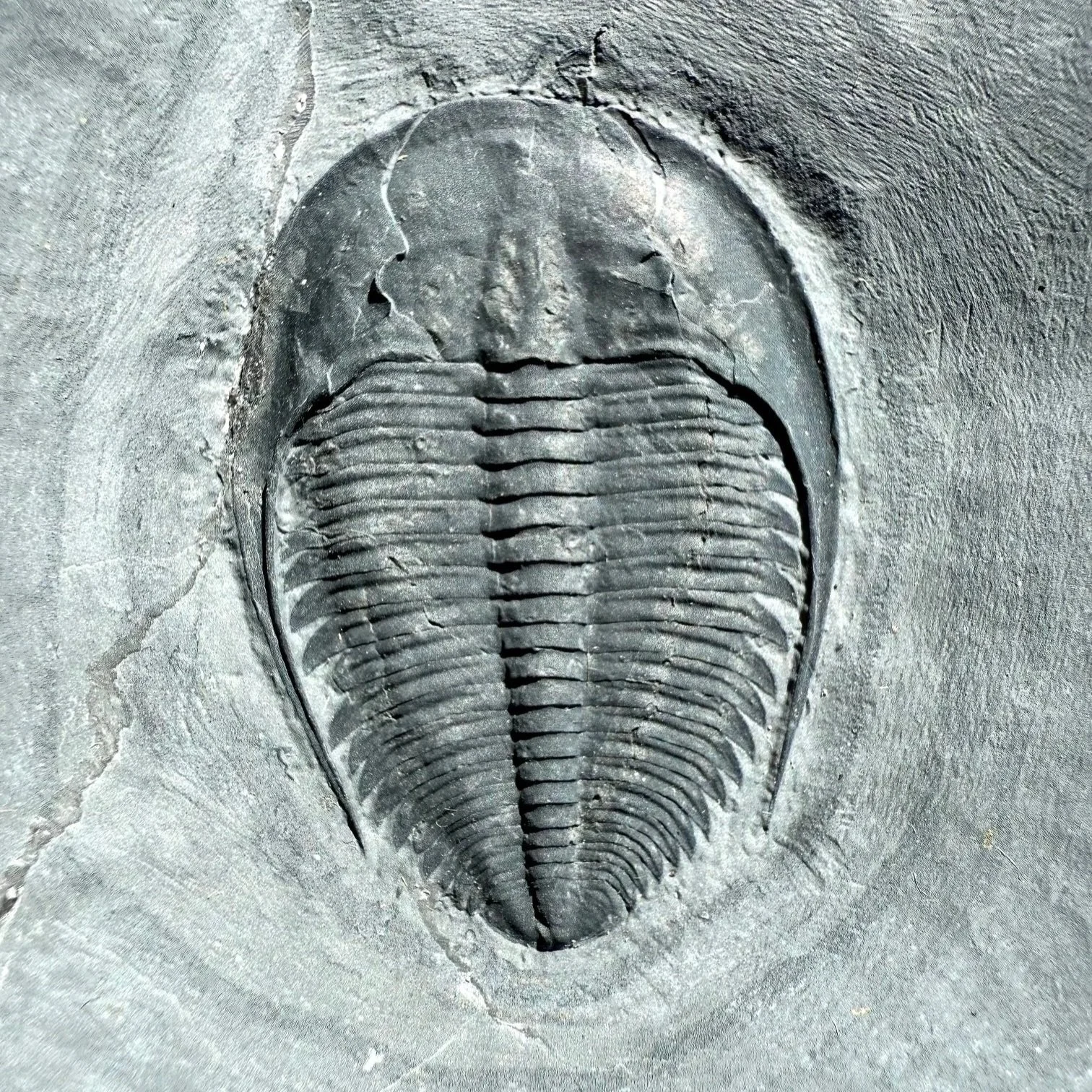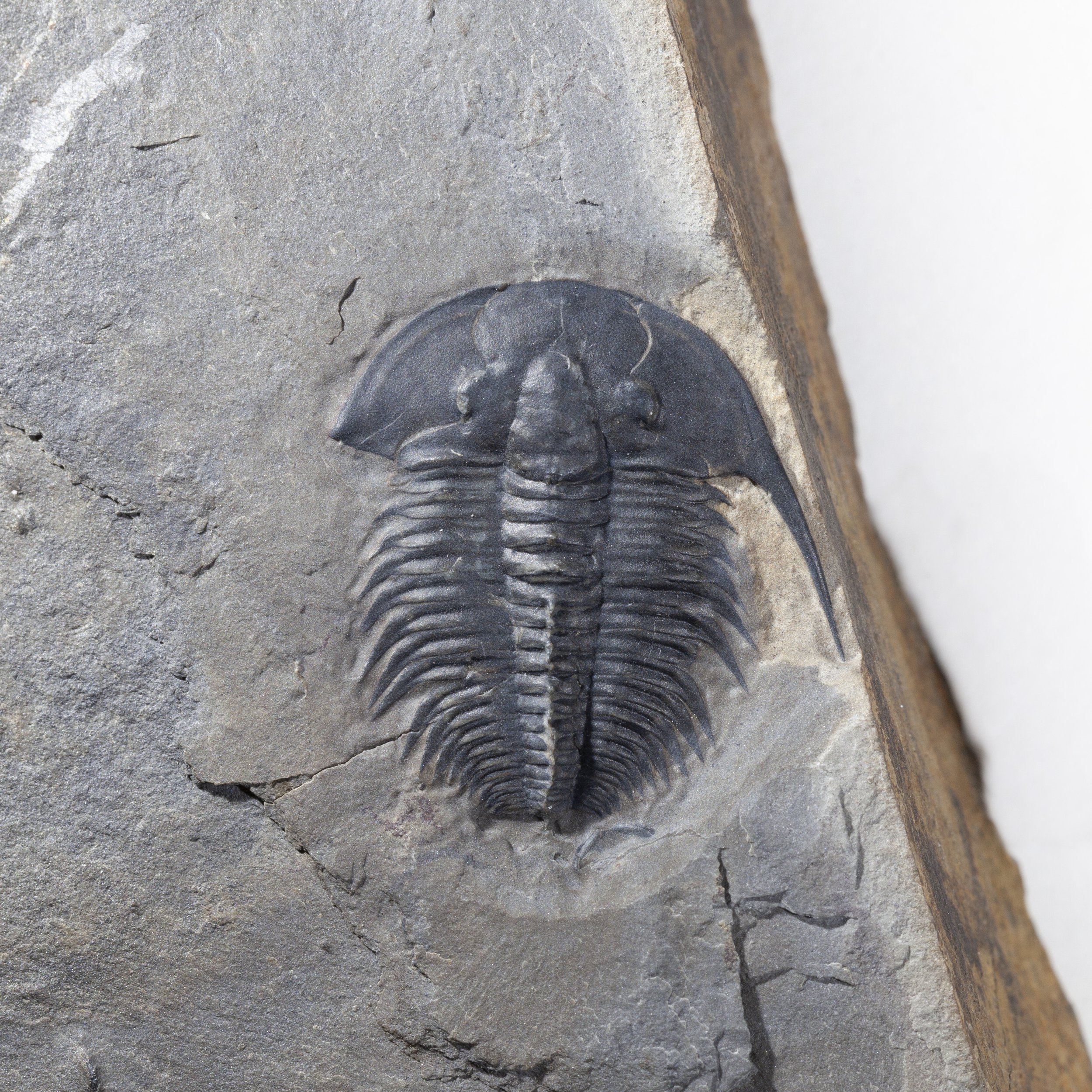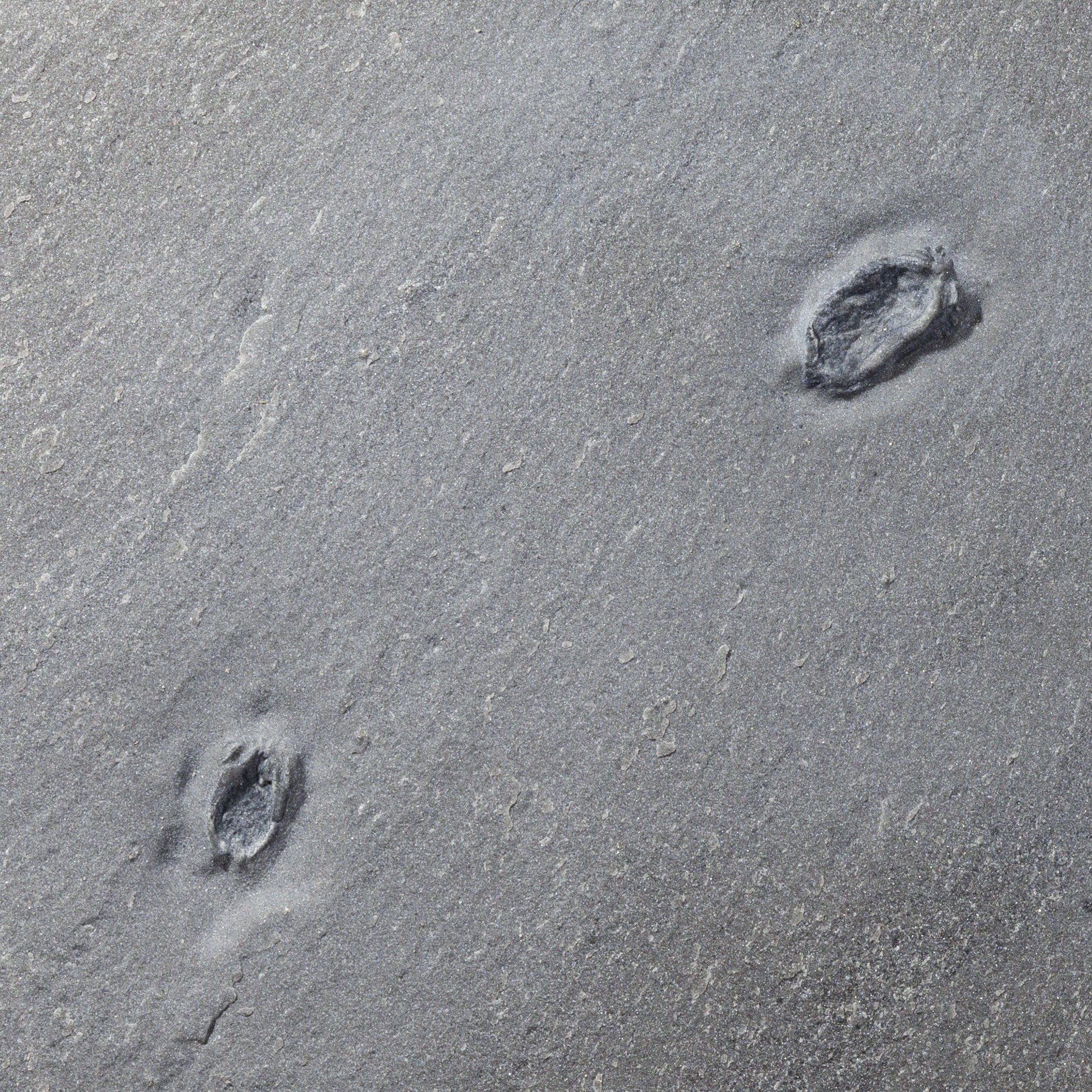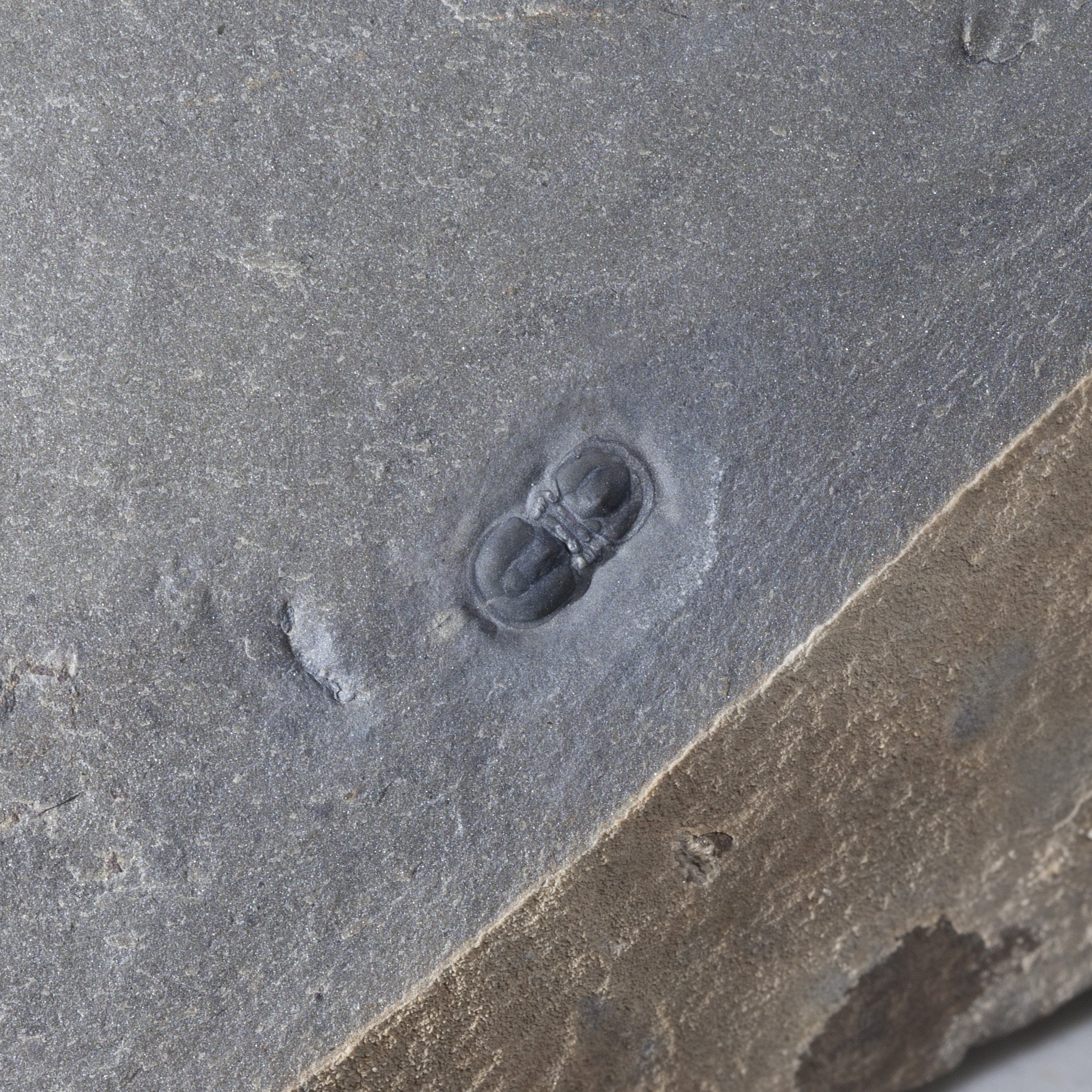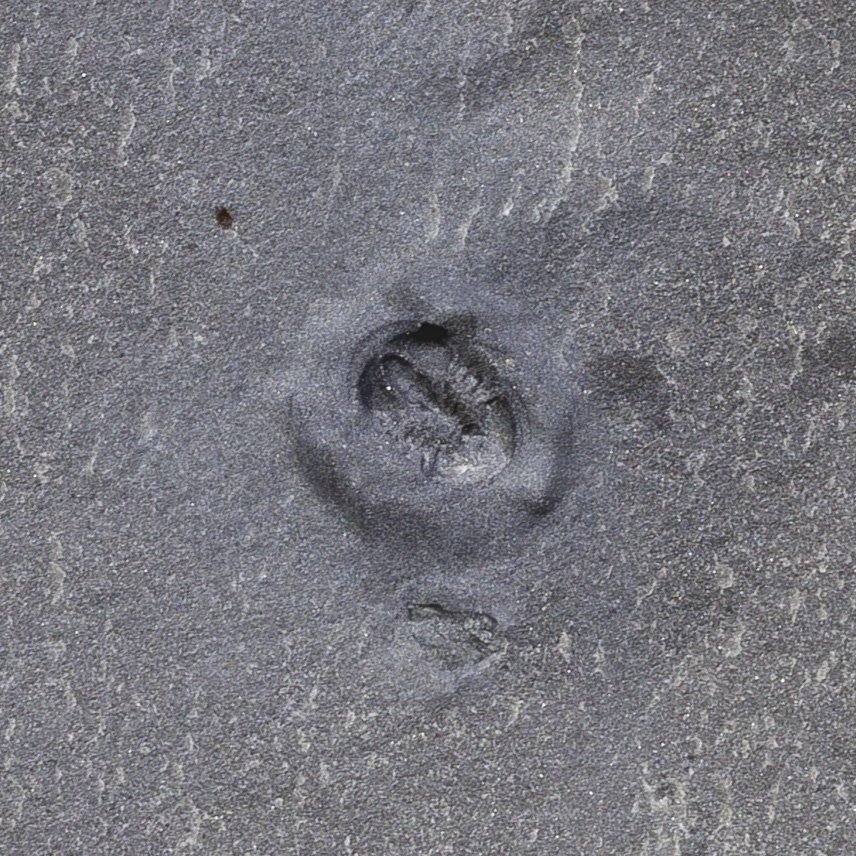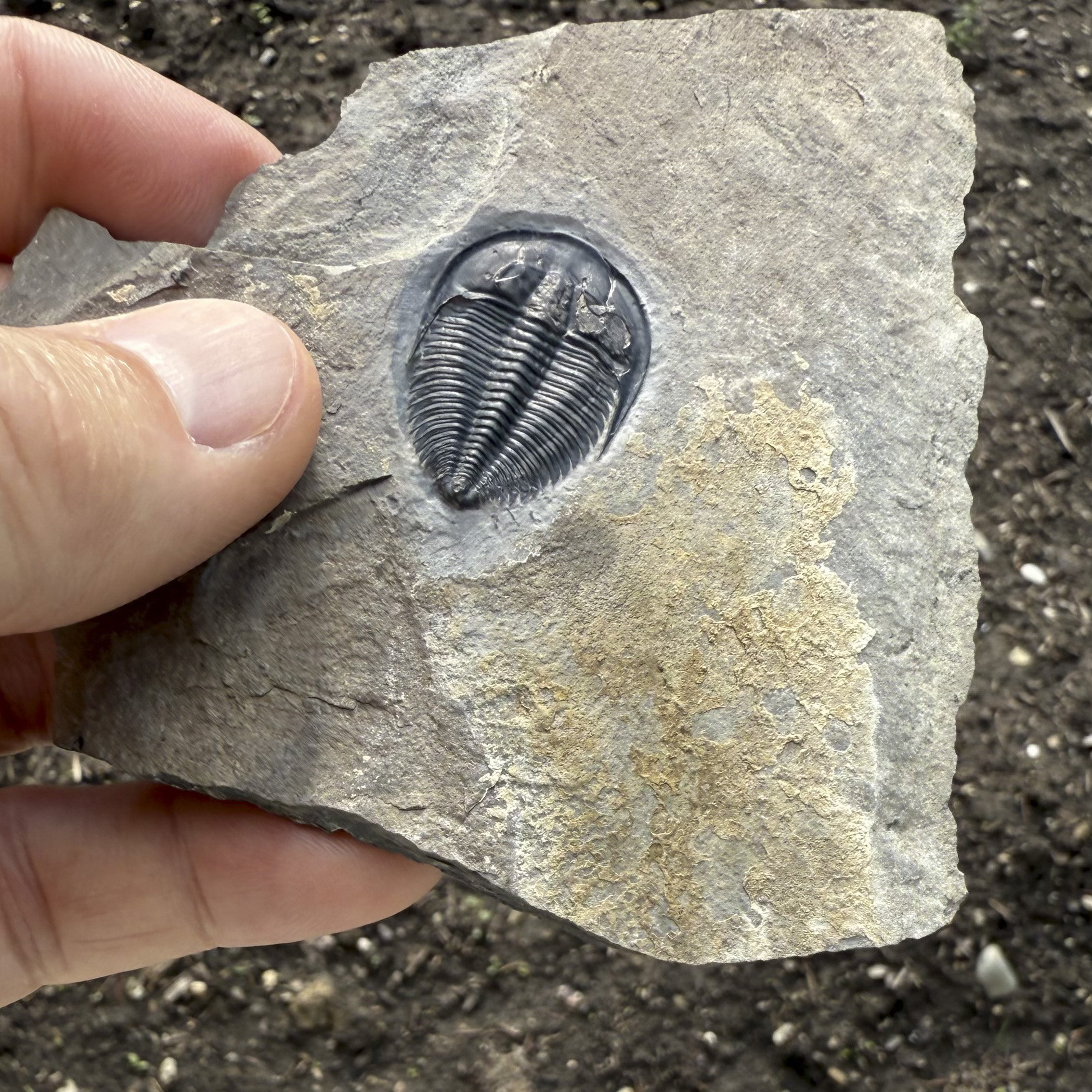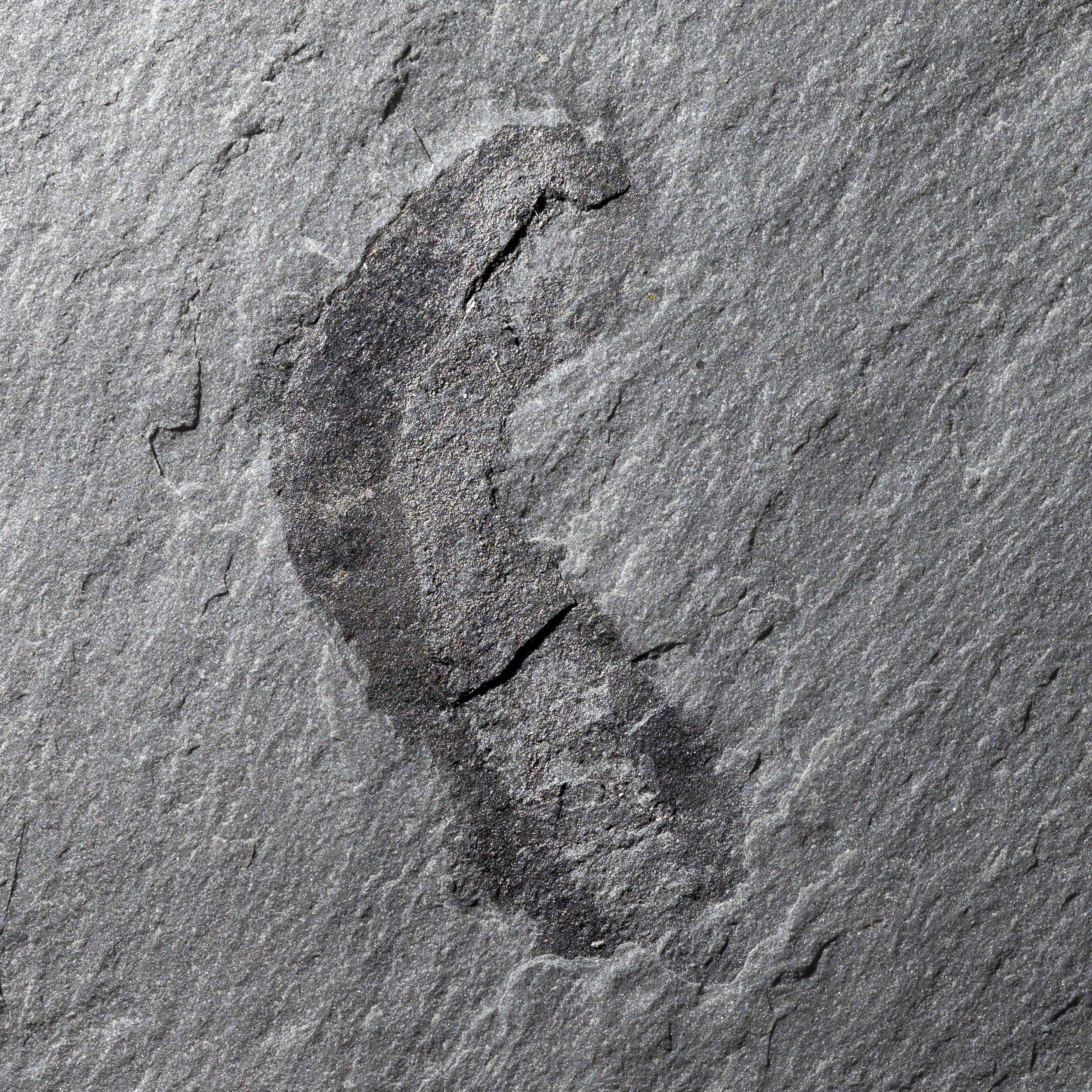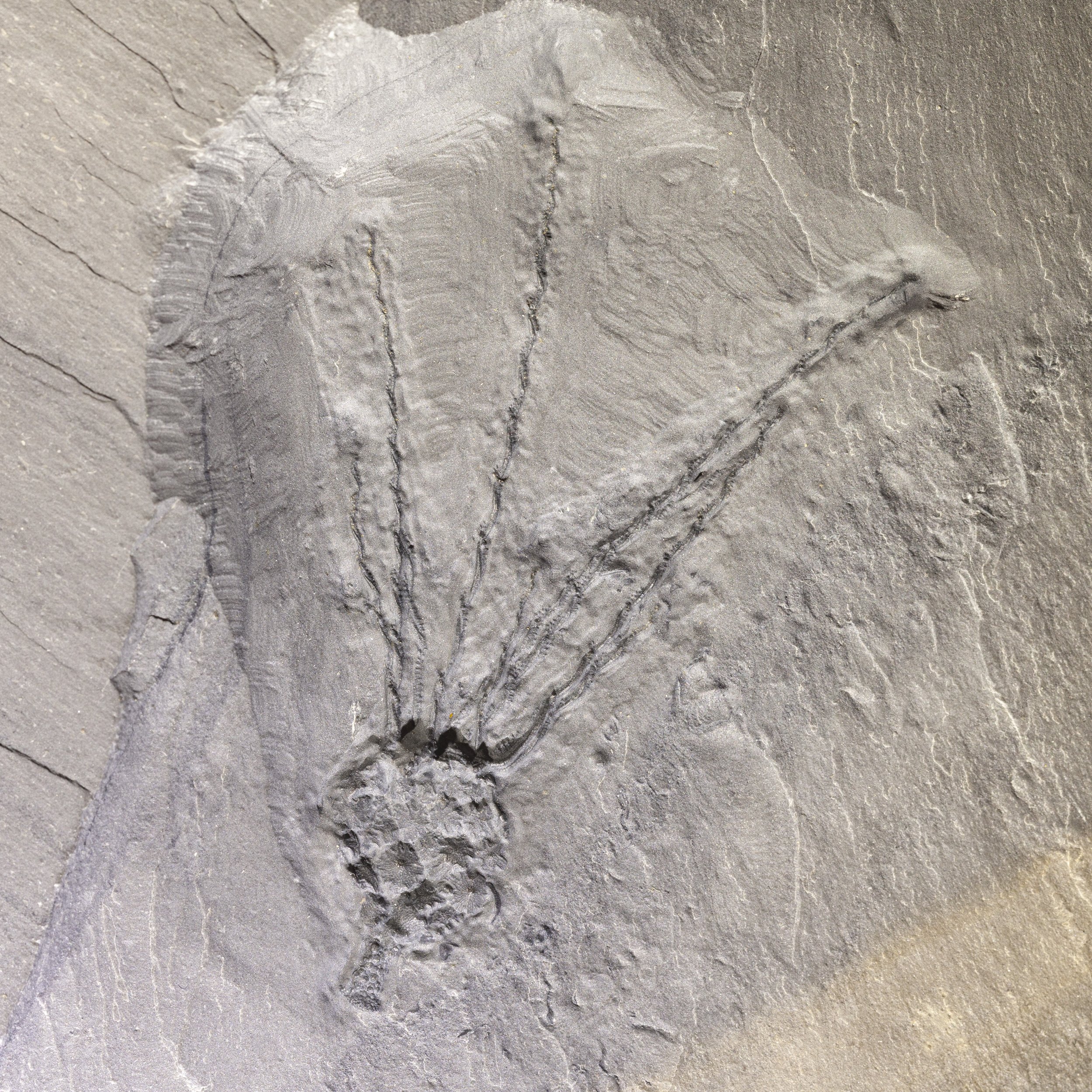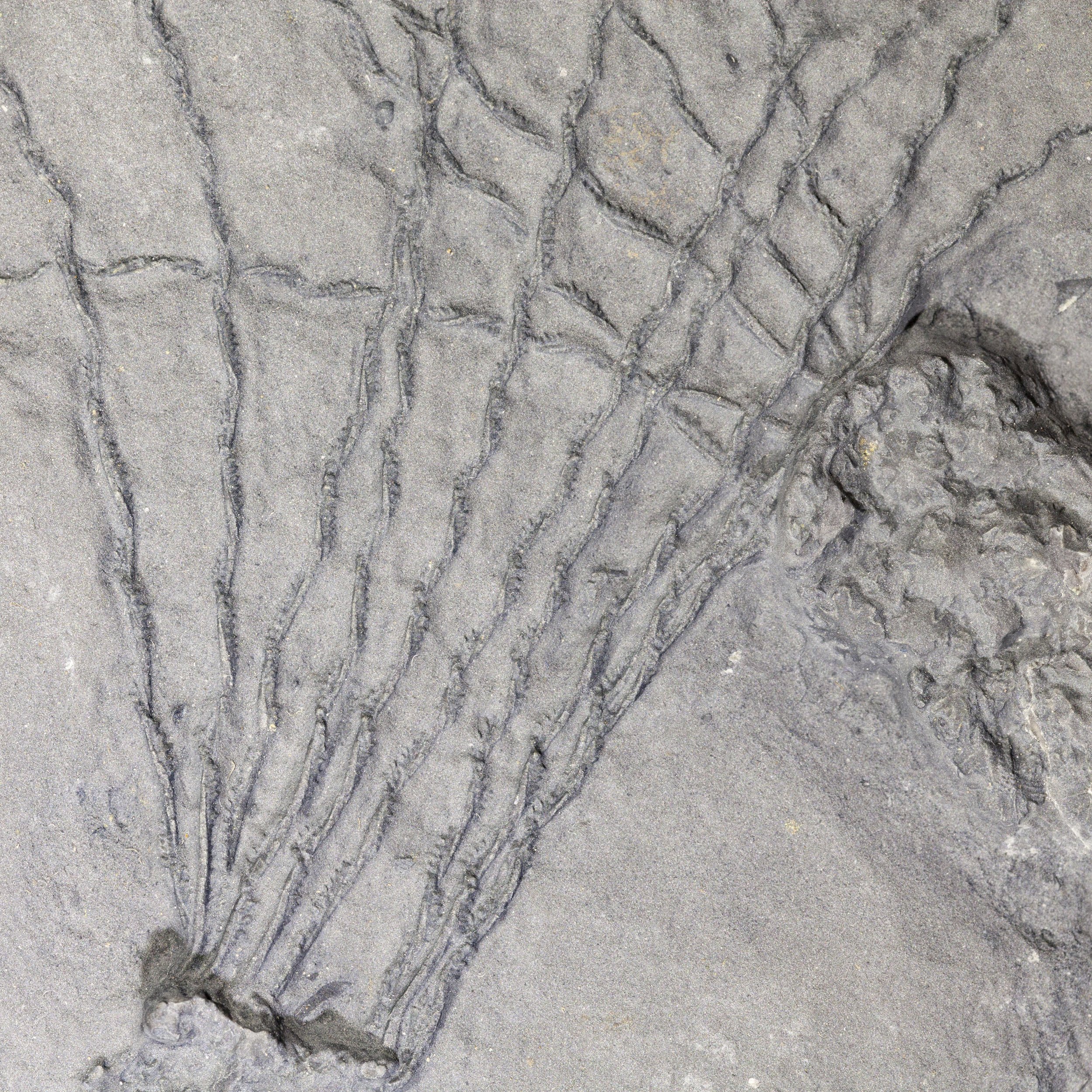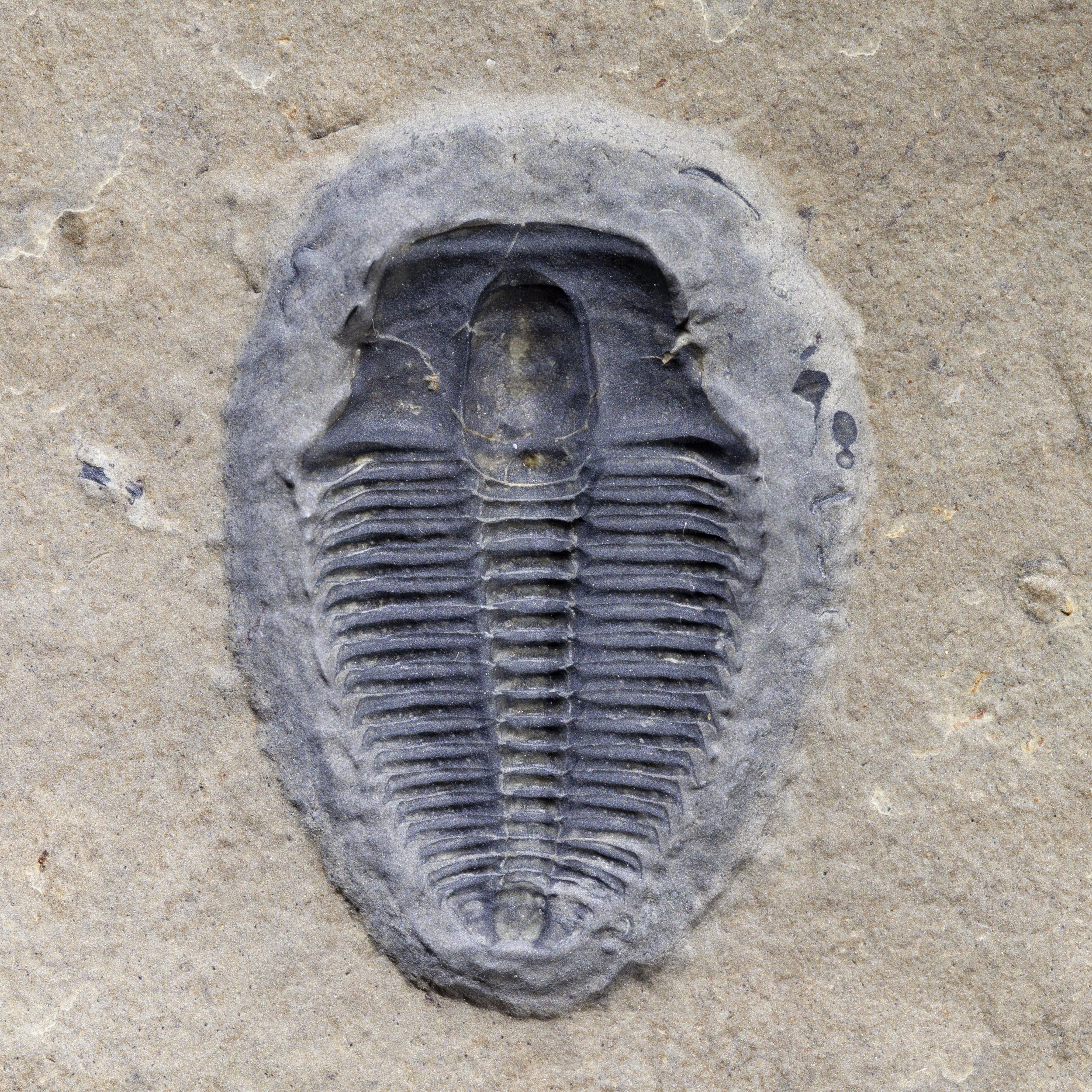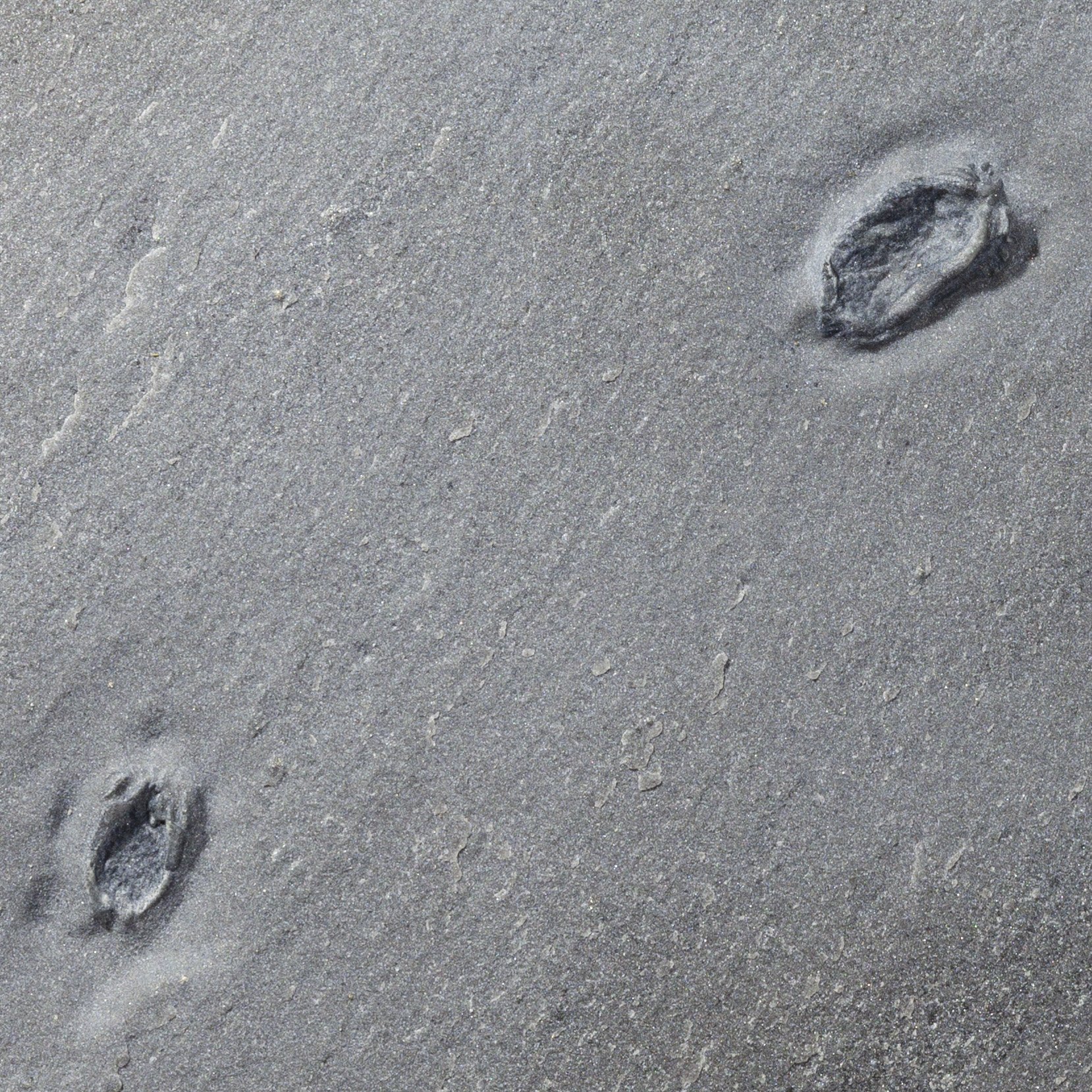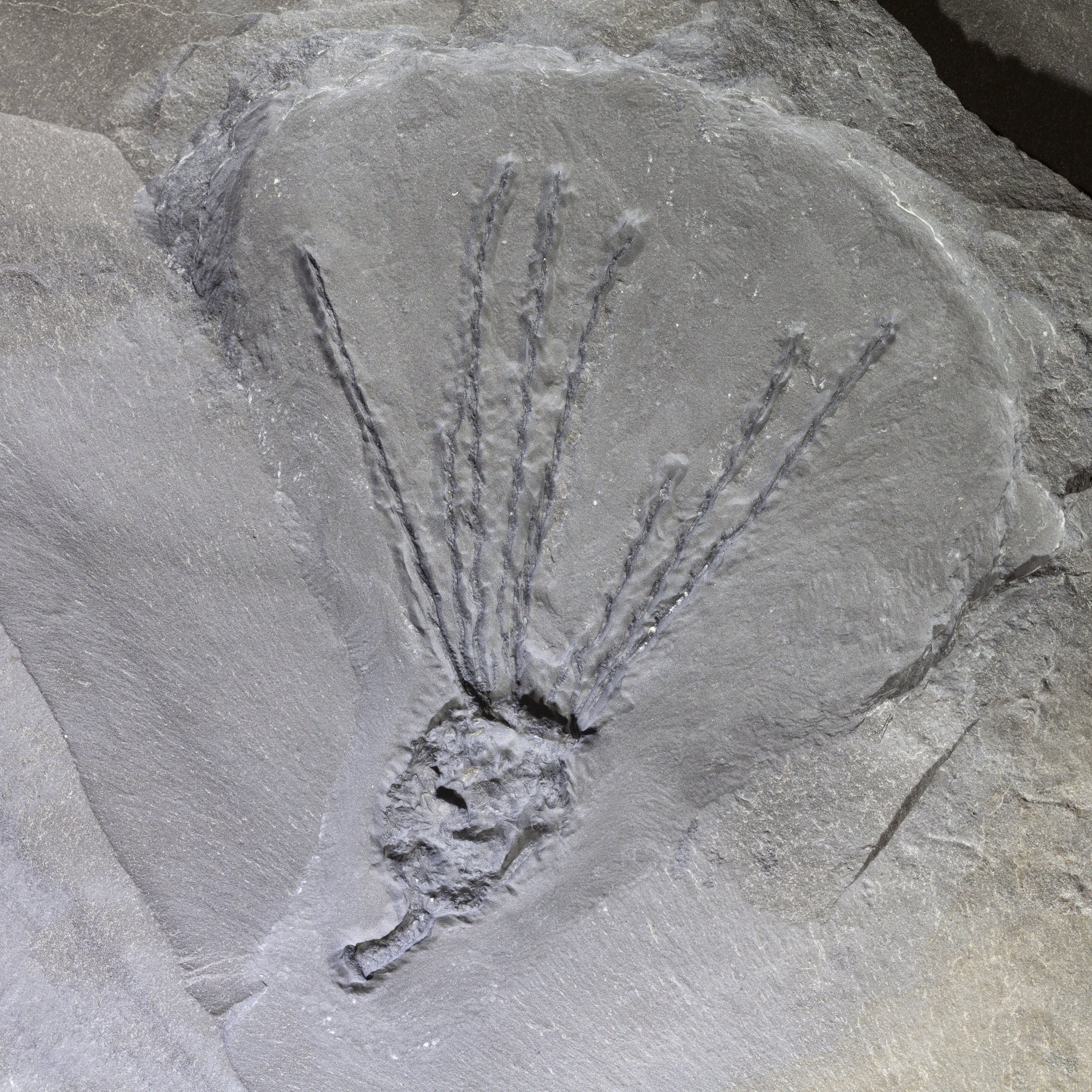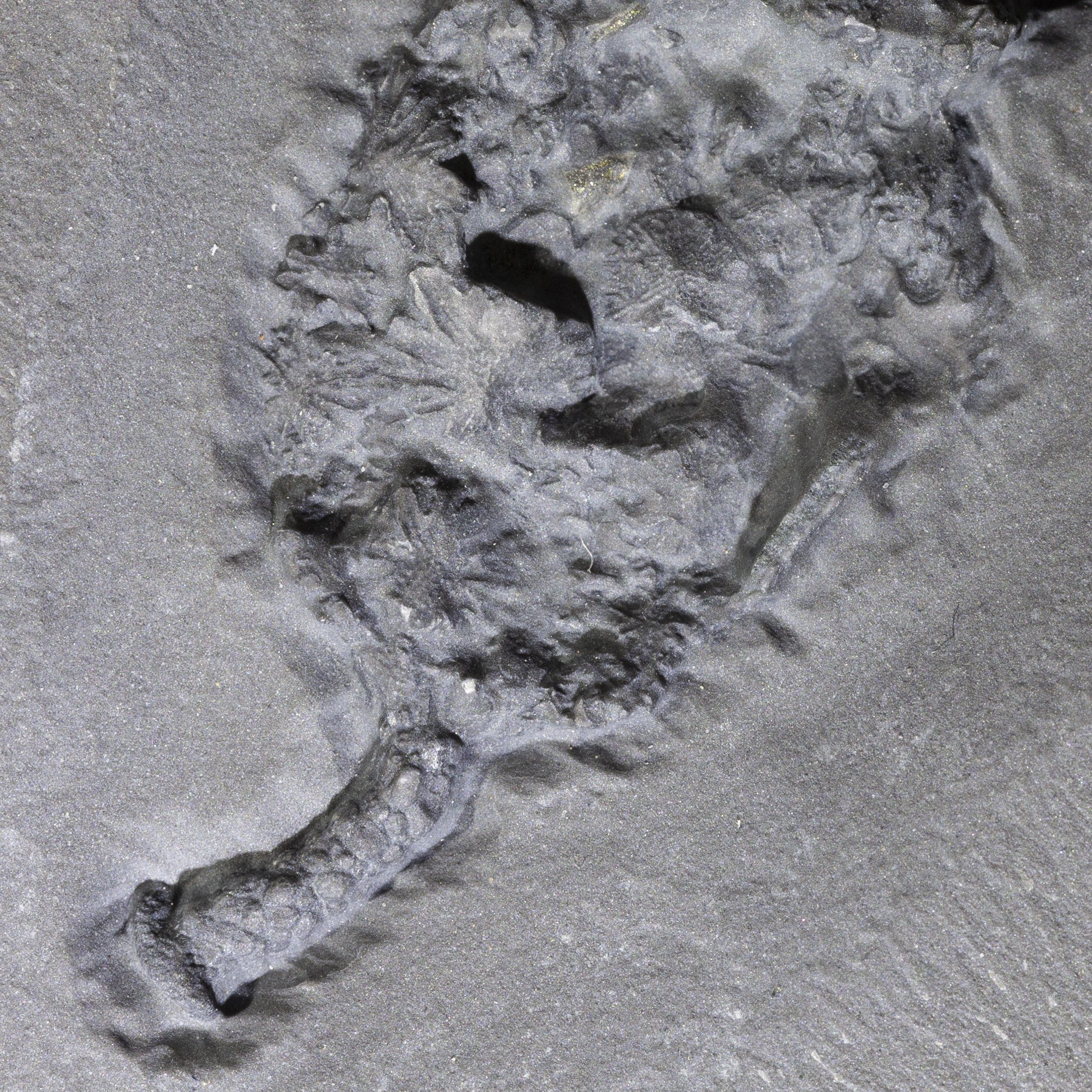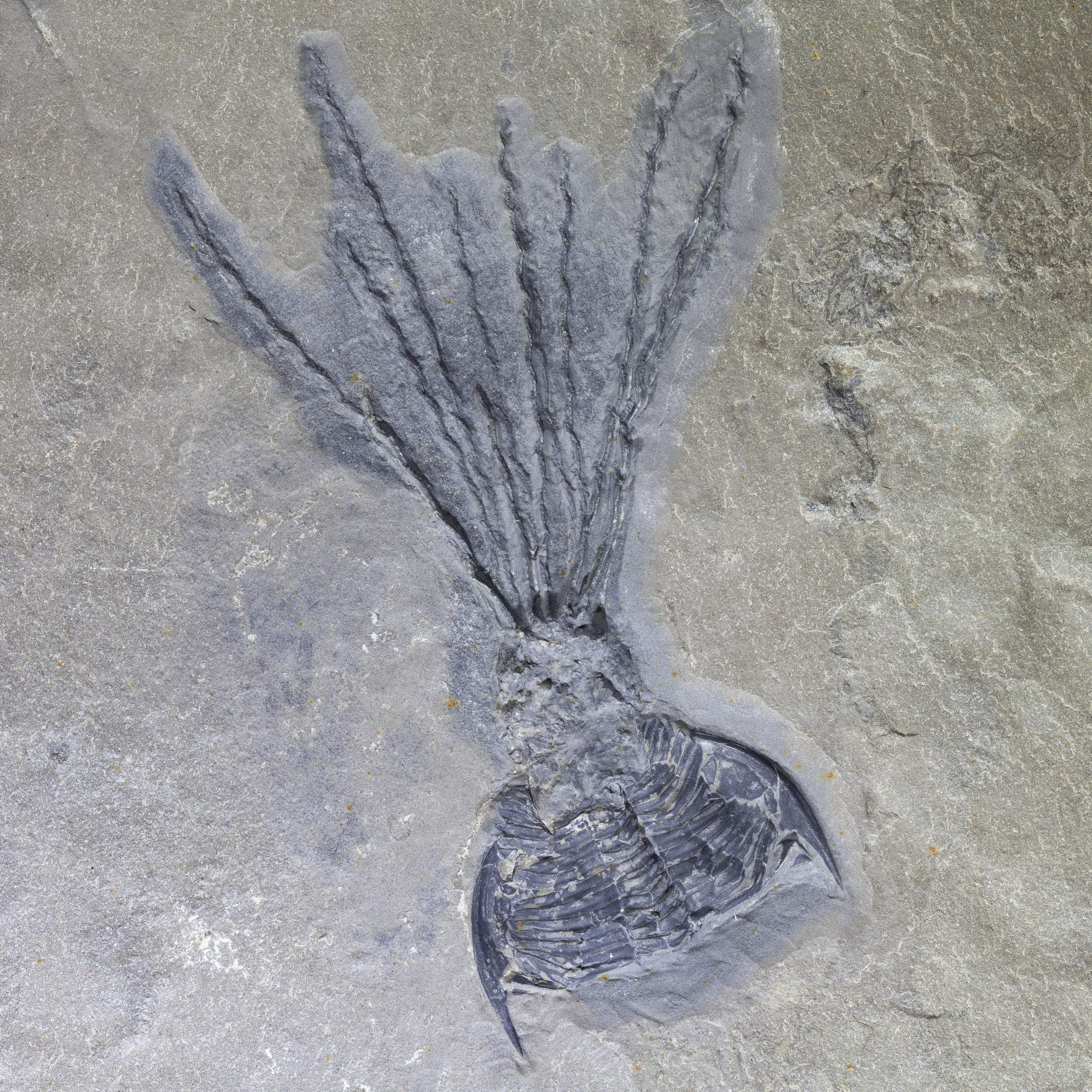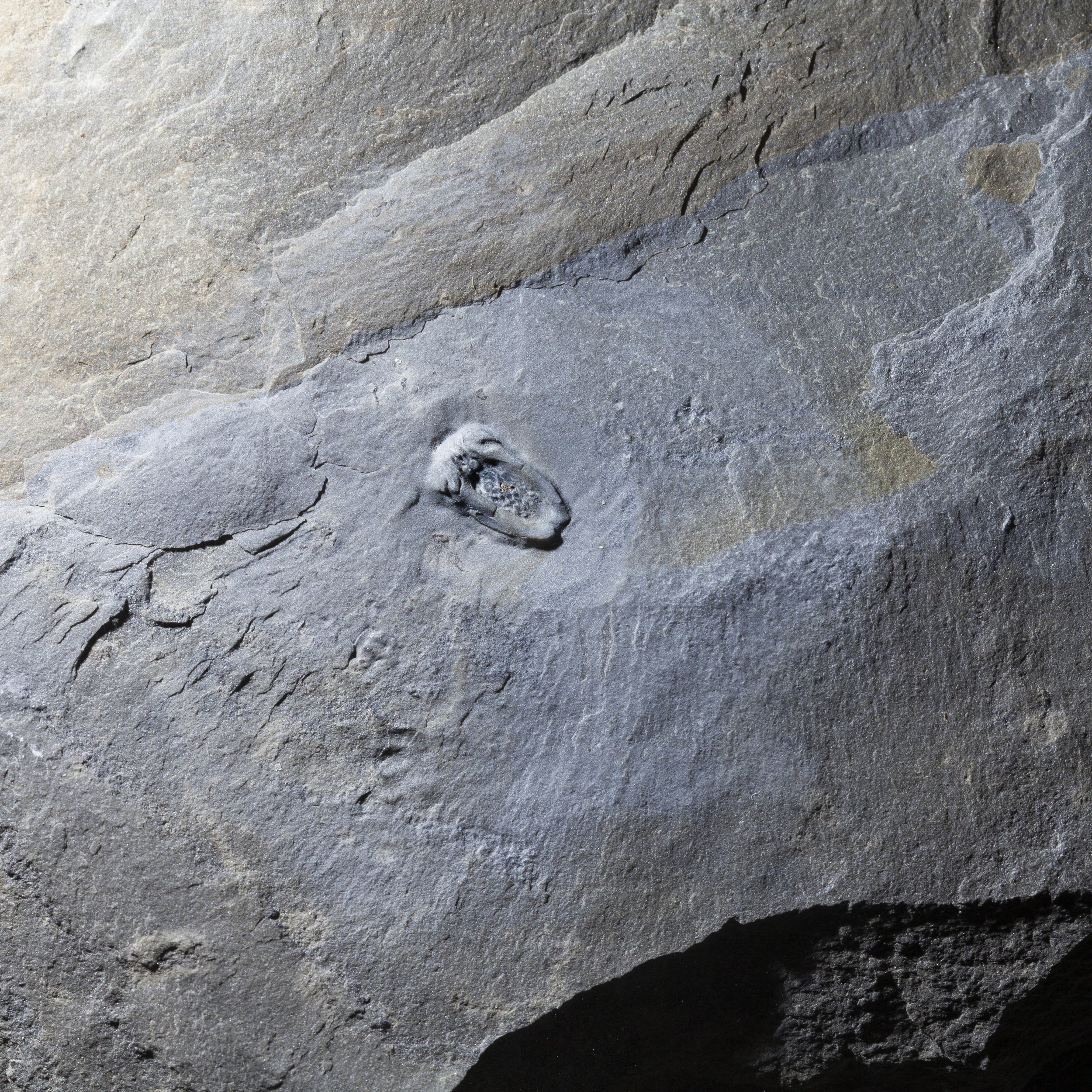 Image 1 of 3
Image 1 of 3

 Image 2 of 3
Image 2 of 3

 Image 3 of 3
Image 3 of 3




Ctenocystis utahensis
Vendor: FS-JS
SKU Number: SQ6555367
Ctenocystis utahensis from the Middle Cambrian, Spence Shale, Wellsville Mtns, Box Elder Co., Utah.
Ctenocystoidea is an extinctclade of echinoderms, which lived during the Cambrian and Ordovician periods. Unlike other echinoderms, ctenocystoids had bilateral symmetry, or were only very slightly asymmetrical. They are believed to be one of the earliest-diverging branches of echinoderms.
Full dimensions are listed below.
Vendor: FS-JS
SKU Number: SQ6555367
Ctenocystis utahensis from the Middle Cambrian, Spence Shale, Wellsville Mtns, Box Elder Co., Utah.
Ctenocystoidea is an extinctclade of echinoderms, which lived during the Cambrian and Ordovician periods. Unlike other echinoderms, ctenocystoids had bilateral symmetry, or were only very slightly asymmetrical. They are believed to be one of the earliest-diverging branches of echinoderms.
Full dimensions are listed below.
Additional Information
Ctenocystis is an extinct genus of enigmatic marine animals that lived primarily during the Middle Cambrian period, though the broader group it belongs to, the Ctenocystoidea, survived into the Late Ordovician. Unlike most of its echinoderm relatives, which typically exhibit five-fold radial symmetry, Ctenocystis possessed a fundamentally bilateral body plan. Its flattened, ovoid body was covered in a tessellated plating of calcite, characteristic of echinoderms. A defining feature was the anterior "ctenoid apparatus," a comb-like structure of movable plates believed to have been involved in filter feeding, capturing suspended food particles from the water as it likely lay epibenthically on the seafloor. The study of Ctenocystis and other early, non-radially symmetrical echinoderms is crucial for understanding the evolutionary origins and diversification of the echinoderms.
References:
Reference to Wikipedia: Ctenocystoidea
